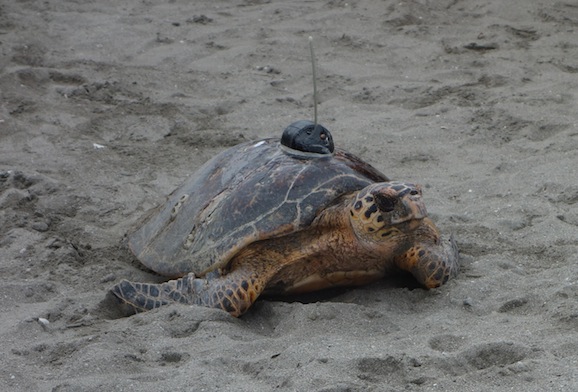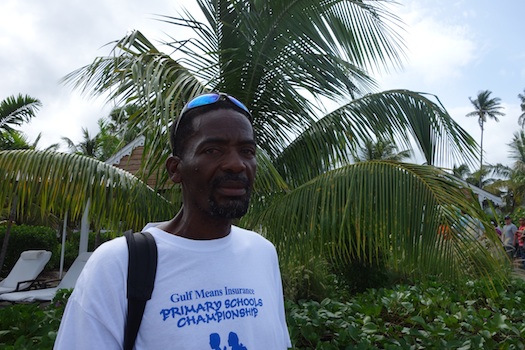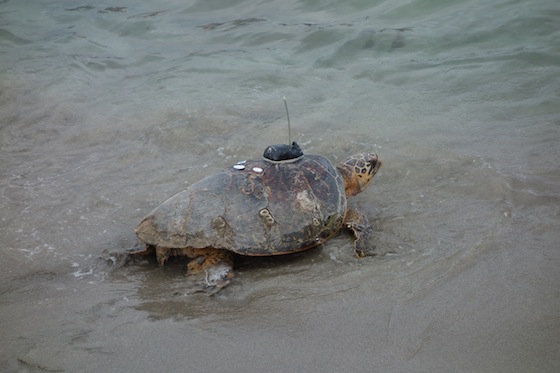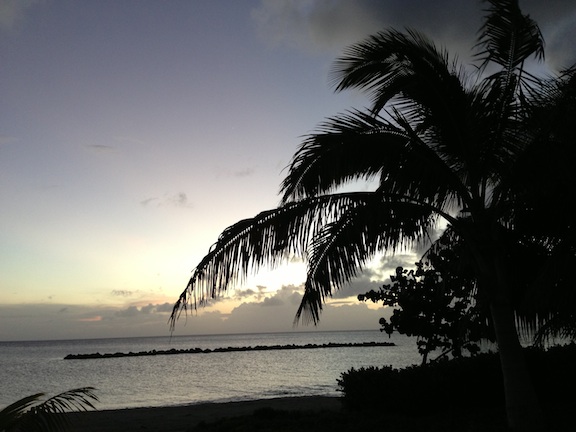Above: Banjo returns to the ocean (All photos by CJ)
By Alexander Britell
NEVIS — It’s been more than a decade since Lemuel Pemberton began his efforts to save the nesting sea turtle population on the island of Nevis.
Over the years, a one-man band became something bigger with help from the Four Seasons Nevis and the Sea Turtle Conservancy, and now it seems that the hard work is beginning to pay off.
While Nevis’ local sea turtle population remains in decline, as is the case for a species that is critically endangered across the Caribbean, there are indications of growth: increased nesting, increased diversity and a decline in poaching.
When Pemberton first began monitoring Nevis’ beaches, the fledgling Nevis Turtle Group found about 12 turtles in one season.
“Over the years, it’s gone up to the 20s, the 30s — I think last year we would have gotten close to 40,” Pemberton tells Caribbean Journal. “We did different beaches, so somewhere in the region of 150 to 200 nests. In the first year, we found about 40 to 50 nests. So the number of nests has definitely increased.”
Above: Lemuel Pemberton
Pemberton’s group got a significant boost in 2006, when it began the partnership with the Four Seasons Resort and the Sea Turtle Conservancy.
Each year, the three combine to run the “Tour de Turtles” weekend, which typically sees the geo-tagging and release of a pair of turtles.
This weekend, two new nesting turtles were tagged, named, and released at the resort: Caribelle and Banjo, both hawksbills.
“Both of the turtles the last couple of days were young adults — that’s a good thing,” says David Godfrey, executive director of the Sea Turtle Conservancy. “Neither of them had been tagged, so it shows you there may be some in the flow from hatchling to juvenile to young adult and finally reaching their nesting age that are just beginning to return, so those are the ones we really need to protect and recover the population — so it’s a good thing that they’re out there and beginning to come back.”
Pemberton says local awareness of sea turtles — and the need to protect them — has increased considerably in recent years.
“The awareness [now] is much higher,” he says. “In the early days, people didn’t know that it happened. Lots of people had never saw this. There were people that said, ‘turtle nesting?’ I didn’t know that happens on Nevis.'”
Today, Pemberton counts about 20 people as regular to semi-regular members of the Nevivs Turtle Group — that is, those who make the nighttime treks to Nevis’ beaches to look for nesting turtles and help tag them with tracking devices.
Above: Banjo makes her way out to sea
But while there do seem to be more turtles on the island’s beaches particularly this year, it can be difficult to make statements about the trend on any one year, Godfrey says.
“Sadly, the long-term trend is down here in Nevis,” he says. “They happen to be having a good year in Nevis, which is encouraging. It shows you the turtles are out there, but we need to give them a chance to recover.”
Above: the beach at the Four Seasons Nevis
Of course, the biggest threat to these creatures in the Caribbean remains poaching, something Pemberton says has fallen dramatically on the island.
“We basically stopped that,” he says. “There have not been so many lost to poaching, and we’ve had new [turtles] that come in.”
But Nevis still has a legal harvesting season from Oct. 2 to Feb. 27, and that needs to be reduced, he says. But totally eliminating the harvest might have unintended consequences — and drive the trade in turtles underground.
For now, Pemberton will continue informing Nevisians about their marine neighbours, continue working teaching local Nevisian youth and continue his evening beach walks in search of that next turtle, four or five nights every week.
“It might take a few more years to really see what is happening,” Pemberton says. “But right now, the signs look pretty good.”



